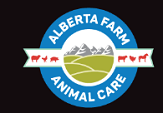We, veterinarians, are using more and more non-steroidal anti-inflammatory drugs (NSAIDs). One of the big areas to focus on is the pain associated with calving. You, together with your veterinarian, should develop a plan for when it comes to calving this spring. There are several choices out there in the injectable, oral and pour-on formulations to consider.
There is no doubt that a cow undergoing a caesarian section will benefit immensely from NSAIDs because she has had major abdominal surgery. She will get back to eating quicker and, as a result, probably milk better. If traction is applied to the calf, then the calf usually gets painkillers because of leg swelling due to the chains biting in. We double wrap the obstetrical chains and teach all producers to do the same. This avoids many broken legs by spreading the force out, but the legs are still sore, and there is swelling evident in many cases.
Some prominent researchers at the Calgary Veterinary School and manufacturers of painkillers are in the middle of several studies measuring the benefits of giving painkillers around calving time. There is no question in my mind when major manipulation is performed that NSAIDs will help the cow recover quicker.
Also, whenever we need to use a calf puller, NSAIDs would be suitable for both the cow and the calf. The cow will get back to eating quicker as the pains diminished. The calf will likely suckle quicker and be more vigorous. Researchers are seeing many promising results for both cows and calves from these treatments. Some trials will even compare the different NSAIDs on the market, but we know they should all work. The question is to what degree and for what type of pain.
Many other procedures associated with calving will benefit from concurrent usage of NSAIDs, but, depending on severity, veterinarians may or may not prescribe them. An NSAID may be a wise choice with a prolapsed uterus, where shock, blood loss and other complicating factors occur. Prolapsed vaginas, rectums or prolapses of perivaginal fat may also benefit from the use of NSAIDs. Remember that all the drug companies cannot possibly put all the usages of NSAIDs on their label. Still, we know many things associated with calving could cause pain and or inflammation.
Tears and lacerations in the birth canal or vulval lips cause swelling, localized infections and have the potential to slow down rebreeding. Most calving issues are no fault of the cow, and the more comfortable we make her and improve her road to recovery, the better.
Caring for and assisting cows and calves at calving is what we all take pride in. It is great that cattlemen now have great tools at their disposal to take away the pain. I even had one producer ask at a recent meeting if painkillers should be given when we process newborn calves. Maybe the researchers will look at the fact that all these little pains add up to something significant. Time will tell, but it is interesting that producers see the benefits of using NSAIDs around calving time.
When it comes to other painful procedures, such as repairing broken legs, it’s a no-brainer. A recent study showed increased appetite and weight gains in diarrheic calves that received NSAIDs. The quicker and better calves recover from systemic disease, the better they do. I have even used NSAIDs by themselves in calves limping or sore from being stepped on. A quicker, less stressful recovery was the result.
Navel infections cause lots of pain, and calves often walk hunch-backed and grunt when you grab them in the navel area. Grunting and grinding of teeth, also called bruxism, are two very real signs of severe pain that need to be addressed. Most calf hood diseases would benefit from concurrent use of NSAIDs. The beauty is that the cost is low in young calves, with significant benefits to the calf’s recovery and welfare.
Some NSAIDs may be more convenient to use or have shorter withdrawals that may be important in mature cattle. The thing is, they all work and which one to use in which situation is what you and your veterinarian need to determine. They all need a prescription but have way fewer side effects than the steroids of old. Have some in your calving kit and use them wisely under direction from your veterinarian. Watch for further research in this field around pain control in all areas of animal production.









